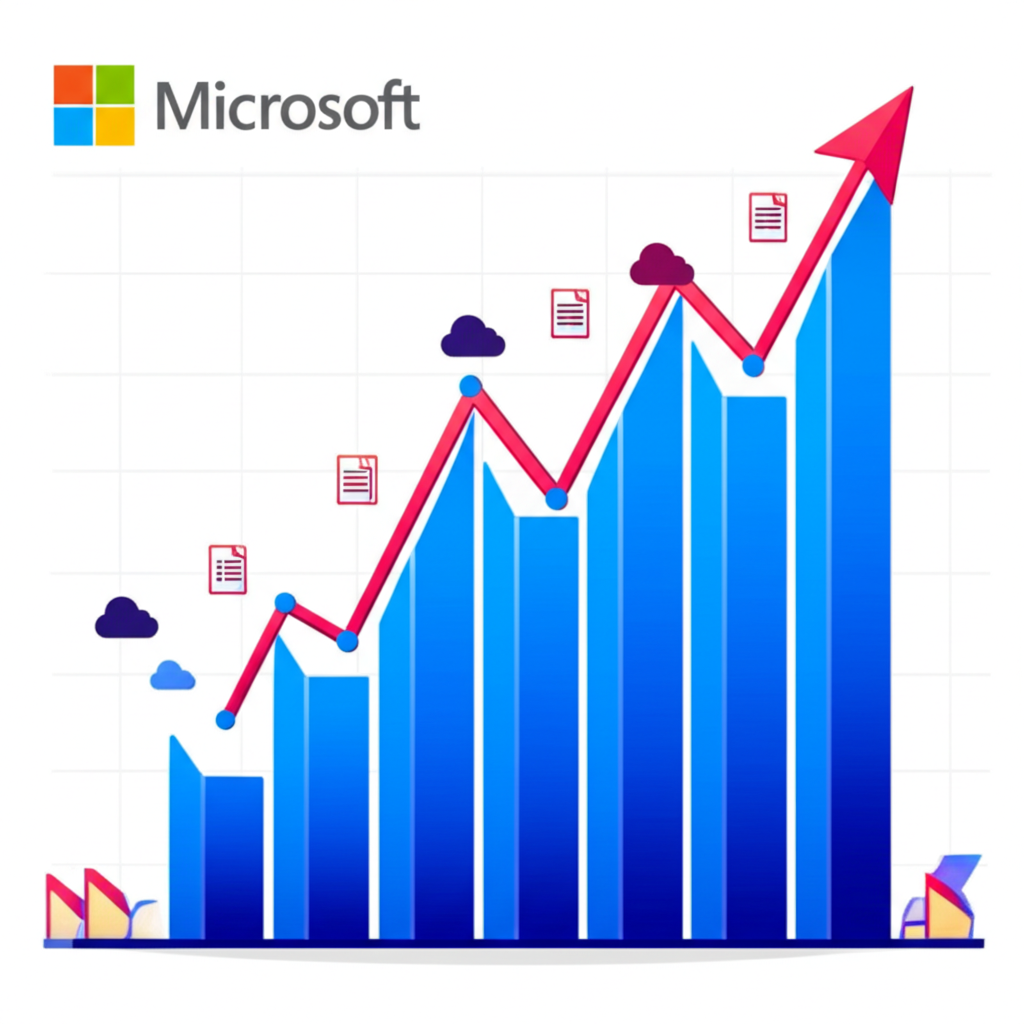Understanding Blue-Chip Stocks: Definition and Key Characteristics

Blue-chip stocks are widely recognized as the backbone of conservative and long-term investment strategies. These stocks belong to companies that have stood the test of time—large, reputable, and financially resilient organizations with a proven ability to generate steady earnings and return value to shareholders. The term “blue chip” traces its roots to poker, where blue-denominated chips traditionally carry the highest value, reflecting the premium status these companies hold in the financial world. Investors often turn to blue-chip equities during uncertain economic periods because of their relative stability and enduring business models.
What sets these firms apart isn’t just size or brand recognition—it’s a combination of operational strength, consistent performance, and the ability to adapt over decades. They typically dominate their industries, benefit from strong competitive advantages, and maintain healthy balance sheets that allow them to fund innovation, withstand downturns, and continue rewarding investors through dividends and buybacks. While they may not offer the explosive short-term returns of speculative growth stocks, their reliability makes them a cornerstone of diversified portfolios.
What Makes a Company a “Blue Chip”?
Not every large company earns the blue-chip label. True blue-chip status is defined by a set of rigorous criteria that reflect long-term viability, financial discipline, and market influence:
* **Large Market Capitalization:** These companies are industry titans, often ranking among the largest publicly traded firms globally. Their sheer scale provides insulation against volatility and enhances investor confidence.
* **Financial Strength and Stability:** A robust balance sheet, strong cash flow generation, and conservative debt management enable them to navigate recessions and fund future initiatives without relying heavily on external financing.
* **Consistent Profitability:** A decade-long track record of positive earnings—even through economic cycles—is a hallmark of a dependable blue-chip business.
* **Reliable Dividend Payments:** Many blue chips have a history of not only paying regular dividends but also increasing them annually, signaling financial health and a commitment to shareholder returns.
* **Market Leadership and Competitive Advantage:** Whether through brand power, technology, or distribution, these companies maintain dominant positions that are difficult for competitors to challenge.
* **Trusted Brand Reputation:** Household-name brands foster customer loyalty and predictable revenue streams, which in turn support stable stock performance.
* **Resilience in Downturns:** Their diversified operations and established market presence allow them to outperform peers when economic conditions weaken.
Together, these traits create a profile of a company built to last—one that investors can rely on for steady growth and reduced risk over time.
Microsoft’s Blue-Chip Credentials: A Detailed Examination

Among today’s technology leaders, Microsoft Corporation (MSFT) stands out as a textbook example of a modern blue-chip stock. Far from being a legacy player resting on past success, Microsoft has consistently evolved, maintaining its dominance while driving innovation across multiple high-growth sectors. Its performance across key financial and strategic metrics aligns closely with the classic definition of a blue-chip company—yet it also transcends it by combining stability with sustained innovation.
From enterprise software to cloud infrastructure and artificial intelligence, Microsoft operates at the core of global digital transformation. Its influence spans businesses, governments, and consumers, making it one of the most deeply embedded technology providers in the world. This widespread integration strengthens its moat and ensures recurring revenue, two critical components of long-term investment appeal.
Market Capitalization and Stability
Microsoft’s market capitalization is one of the largest in the world, frequently exceeding $3 trillion and placing it at or near the top of global rankings. This immense valuation reflects more than investor optimism—it underscores deep confidence in Microsoft’s business model, leadership, and long-term prospects. Such scale provides a natural buffer against market swings, reducing vulnerability to short-term volatility.
As a key component of major indices like the S&P 500 and the Dow Jones Industrial Average, Microsoft plays a pivotal role in shaping broader market trends. Its inclusion isn’t merely symbolic; it reflects institutional trust and the company’s status as a bellwether for the technology sector. The sheer size of its market presence allows Microsoft to absorb shocks that might destabilize smaller firms, reinforcing its reputation as a safe harbor in turbulent markets.
Financial Health and Profitability
Microsoft’s financials are a masterclass in consistent, high-quality performance. The company reported $211.9 billion in total revenue for fiscal year 2023, marking a 7% year-over-year increase despite macroeconomic headwinds. This growth was driven by strong demand across its cloud, productivity, and enterprise services divisions.
More impressively, Microsoft maintains industry-leading profit margins and generates substantial free cash flow—$77.3 billion in FY2023—enabling it to reinvest in R&D, pursue strategic acquisitions, and return capital to shareholders. Its balance sheet remains exceptionally strong, with over $100 billion in cash and equivalents and a manageable debt-to-equity ratio. This financial flexibility gives Microsoft the agility to seize opportunities and weather downturns without compromising its core operations.
Dividend History and Shareholder Returns
While not known for sky-high yields, Microsoft has built a compelling track record of returning value to shareholders. The company initiated its dividend in 2004 and has raised it every single year since, positioning itself as a rising star among dividend-focused investors. In September 2023, Microsoft announced a 10% increase, bringing its quarterly payout to $0.75 per share.
Beyond dividends, the company actively repurchases its stock, having authorized billions in buybacks over recent years. These programs reduce share count, enhance earnings per share, and signal management’s confidence in the company’s future. For long-term investors, this dual approach—steady dividend growth and share consolidation—creates a powerful compounding effect.
Market Leadership and Brand Reputation
Microsoft’s influence extends across multiple foundational layers of the digital economy:
* **Operating Systems:** Windows continues to power the majority of desktop computers worldwide, serving as a critical platform for enterprise and consumer computing.
* **Productivity Software:** Microsoft 365 (including Word, Excel, PowerPoint, and Outlook) dominates the office suite market, with deep integration into business workflows and education systems.
* **Cloud Infrastructure:** Azure ranks as the second-largest public cloud provider globally, trailing only AWS but growing rapidly in enterprise adoption and service breadth.
* **Enterprise Solutions:** Dynamics 365 and Microsoft Teams have become essential tools for modern businesses, enhancing collaboration and operational efficiency.
* **Gaming:** With Xbox, Game Pass, and the pending acquisition of Activision Blizzard, Microsoft is a major force in interactive entertainment and cloud gaming.
This diverse ecosystem creates powerful network effects and cross-selling opportunities, reinforcing customer lock-in and ensuring durable revenue streams.
Innovation and Future Growth Drivers

What truly sets Microsoft apart as a *modern* blue chip is its ability to innovate at scale. Unlike traditional industrial-era blue chips that may stagnate, Microsoft has repeatedly reinvented itself—from a desktop software giant to a cloud and AI leader.
Key innovation drivers include:
* **Artificial Intelligence:** Through its strategic partnership with OpenAI, Microsoft has positioned itself at the forefront of the AI revolution. Products like Copilot for Microsoft 365, Azure AI, and GitHub Copilot are already transforming how users interact with software, opening new monetization avenues.
* **Cloud Expansion:** Azure continues to expand its global data center footprint and service offerings, capturing demand from enterprises transitioning to hybrid and multi-cloud environments.
* **Strategic Acquisitions:** Investments in LinkedIn, GitHub, Nuance, and the planned Activision Blizzard acquisition demonstrate Microsoft’s intent to extend its reach into professional networking, developer ecosystems, healthcare AI, and gaming.
* **Future Technologies:** Microsoft is also investing in long-term bets like quantum computing and mixed reality (via HoloLens), ensuring it remains at the cutting edge of technological advancement.
These initiatives ensure Microsoft is not just maintaining its current dominance but actively shaping the next phase of computing.
Historical Performance: Investing in Microsoft as a Blue Chip
Microsoft’s stock trajectory offers a compelling case study in long-term wealth creation. After a period of sluggish growth in the 2000s, the company reignited its momentum under CEO Satya Nadella, who shifted focus toward cloud services and subscription-based models. This strategic pivot unlocked sustained revenue growth and reinvigorated investor confidence.
The result? One of the most impressive comebacks in corporate history. Microsoft’s stock has delivered outsized returns over the past decade, significantly outperforming the broader market while maintaining relatively low volatility compared to high-growth tech peers.
The “$1000 Investment” Scenario
Consider a hypothetical investment made on January 1, 2004, when Microsoft’s adjusted stock price was approximately $27.50 per share.
* $1,000 invested then would have purchased about 36.36 shares.
Fast forward to January 1, 2024, when the stock traded near $377.50.
* Those 36.36 shares would be worth roughly $13,732.
And that figure doesn’t include the compounding impact of reinvested dividends. In reality, total returns would be even higher. This example illustrates how patience and exposure to a high-quality blue-chip company can yield transformative results over time—turning modest capital into substantial wealth.
Microsoft vs. Other Tech Giants: A Blue-Chip Comparison

While many tech companies have achieved massive scale, not all meet the full spectrum of blue-chip criteria. Microsoft’s blend of stability, profitability, and shareholder returns gives it an edge, especially when compared to peers with less diversified models or inconsistent capital return policies.
| Attribute | Microsoft (MSFT) | Apple (AAPL) | Alphabet (GOOGL) | Nvidia (NVDA) | Amazon (AMZN) |
|---|---|---|---|---|---|
| Market Cap (Trillions) | ~3 | ~3 | ~2 | ~2 | ~1.9 |
| Core Business | Software, Cloud (Azure), Gaming | Consumer Electronics, Services | Search, Ads, Cloud (GCP) | GPUs, AI Chips, Software | E-commerce, Cloud (AWS) |
| Dividend Payout | Consistent & Growing | Consistent & Growing | None (Historically) | Small, Recent Start | None |
| Diversification | High (OS, Office, Cloud, Gaming, Enterprise) | Moderate (iPhone, Services, Mac) | High (Search, YouTube, Cloud, Android) | Moderate (GPU focus, expanding into software) | High (E-commerce, Cloud, Advertising, Entertainment) |
| Profitability Consistency | Excellent | Excellent | Excellent | High (but more cyclical) | High (Cloud segment) |
| Traditional Blue-Chip Fit | Very High | High | High | Emerging (Growth-oriented) | High (Cloud segment provides stability) |
This comparison highlights Microsoft’s unique position: it combines Apple’s financial strength, Alphabet’s innovation reach, and Amazon’s cloud presence—all while maintaining a consistent dividend, something neither Google nor Amazon offers.
Blue Chip Status in the Age of Rapid Tech Innovation
The concept of a blue-chip stock is evolving. In the past, these were often slow-moving industrial or consumer staples companies. Today, technology firms like Microsoft are redefining what it means to be a blue chip—merging resilience with rapid innovation.
Microsoft’s success lies in its ability to balance legacy strength with future-oriented growth. Its core products continue to generate reliable cash flow, while new ventures in AI, cloud, and gaming open high-potential revenue streams. This duality allows it to act as both a defensive holding and a growth engine—a rare combination in the market.
Moreover, its subscription-based model has transformed once-lumpy revenue into predictable, recurring income. This shift has improved earnings visibility and reduced investor uncertainty, further enhancing its appeal as a long-term holding.
Pros and Cons of Investing in Microsoft (as a Blue Chip)
Investing in Microsoft offers a powerful mix of safety and growth potential, but like any major holding, it comes with trade-offs.
**Pros:**
* **Stability and Resilience:** Its diversified business model and massive scale provide insulation from market turbulence and sector-specific disruptions.
* **Proven Track Record:** Decades of revenue growth, profitability, and shareholder returns underscore its reliability as a long-term investment.
* **Dominant Market Positions:** Leadership in cloud computing, enterprise software, and productivity tools creates durable competitive advantages.
* **Commitment to Innovation:** Heavy investment in AI, cloud, and next-gen technologies ensures Microsoft remains relevant in a fast-changing landscape.
* **Exceptional Financials:** Strong cash flow, low debt, and high margins provide flexibility to navigate challenges and pursue strategic opportunities.
**Cons:**
* **Growth Rate Constraints:** As a trillion-dollar company, achieving double-digit percentage growth becomes increasingly difficult, even if absolute dollar growth remains large.
* **Regulatory Challenges:** Its size and market influence make it a target for antitrust scrutiny in both the U.S. and Europe, which could limit expansion or acquisition plans.
* **Fierce Competition:** Rivals like Amazon (AWS), Google (GCP), and Apple (ecosystem) are aggressive and well-funded, particularly in cloud and AI.
* **Maturity in Core Markets:** Windows and Office face limited user growth, relying on upgrades, pricing power, and add-on services for continued expansion.
* **Cybersecurity Exposure:** As a critical infrastructure provider, Microsoft is a prime target for cyberattacks, and any major breach could damage trust and operations.
Conclusion: Microsoft’s Enduring Blue-Chip Status
Microsoft is not just a blue-chip stock—it’s a defining example of how the concept has evolved in the digital age. It meets every traditional criterion: massive market cap, financial strength, consistent profits, and reliable shareholder returns. But it goes further by driving innovation at scale, ensuring its leadership extends well into the future.
For investors seeking a balance between capital preservation and growth, Microsoft offers a rare combination: the stability of a market giant with the momentum of a technology pioneer. Its deep integration into global business operations, combined with strategic bets on AI and cloud computing, positions it to remain a cornerstone holding for decades to come. In a world of uncertainty, Microsoft stands as a beacon of enduring value.
Frequently Asked Questions about Microsoft as a Blue Chip Stock
Is Microsoft considered a safe investment for long-term investors?
Yes, Microsoft is widely regarded as a relatively safe investment for long-term investors. Its financial stability, diversified revenue streams, market leadership, and consistent profitability contribute to its low-risk profile compared to many other stocks.
What are the key financial indicators that qualify Microsoft as a blue-chip stock?
Key indicators include its massive market capitalization (often exceeding $3 trillion), consistent revenue growth (e.g., $211.9 billion in FY23), strong net income and free cash flow, and a robust balance sheet with significant cash reserves and manageable debt.
Does Microsoft offer a competitive dividend yield compared to other blue-chip companies?
Microsoft has a consistent and growing dividend, increasing it annually since 2004. While its dividend yield might not be the highest among all blue chips (especially those in more mature, slower-growth industries), it is competitive for a tech giant and demonstrates financial health.
How does Microsoft’s innovation strategy contribute to its enduring blue-chip status?
Microsoft’s continuous innovation in areas like cloud computing (Azure), artificial intelligence (OpenAI partnership, Copilot), and gaming (Xbox) ensures its long-term relevance, market leadership, and sustained growth, preventing it from becoming a stagnant mature company.
What are the potential risks or challenges Microsoft faces that could impact its blue-chip standing?
Potential risks include increased regulatory scrutiny due to its market dominance, intense competition in cloud and AI from other tech giants, potential market saturation in some legacy sectors, and cybersecurity threats.
How does Microsoft compare to Google (Alphabet) in terms of blue-chip characteristics?
Both are tech giants with massive market caps and strong financials. Microsoft has a longer history of consistent dividends, while Alphabet historically focused more on reinvesting profits. Both exhibit market leadership in their core areas (Microsoft in OS/Office/Azure, Google in Search/Ads/Android) and are heavily invested in AI.
If I invested in Microsoft a decade ago, how would my investment have performed?
An investment in Microsoft a decade ago would have yielded substantial returns, significantly outperforming broader market indices. This is due to the company’s strong growth in cloud computing and successful strategic pivots.
What role does Microsoft’s Azure cloud business play in its blue-chip valuation?
Azure is a critical growth engine for Microsoft, contributing significantly to its revenue and profitability. Its strong position in the high-growth cloud market provides long-term stability and justifies a premium valuation, reinforcing its blue-chip status.
Is Microsoft still considered a growth stock, or primarily a blue-chip for stability?
Microsoft is unique in that it functions as both. It offers the stability and reliability of a blue chip while simultaneously demonstrating significant growth potential driven by its innovation in cloud, AI, and other emerging technologies. It’s often viewed as a “growth blue-chip.”
Should new investors consider Microsoft as a foundational blue-chip stock in their portfolio?
Many financial advisors recommend blue-chip stocks like Microsoft as a foundational component of a diversified portfolio for new investors. Its combination of stability, consistent returns, and exposure to future technological trends makes it an attractive long-term holding.

留言